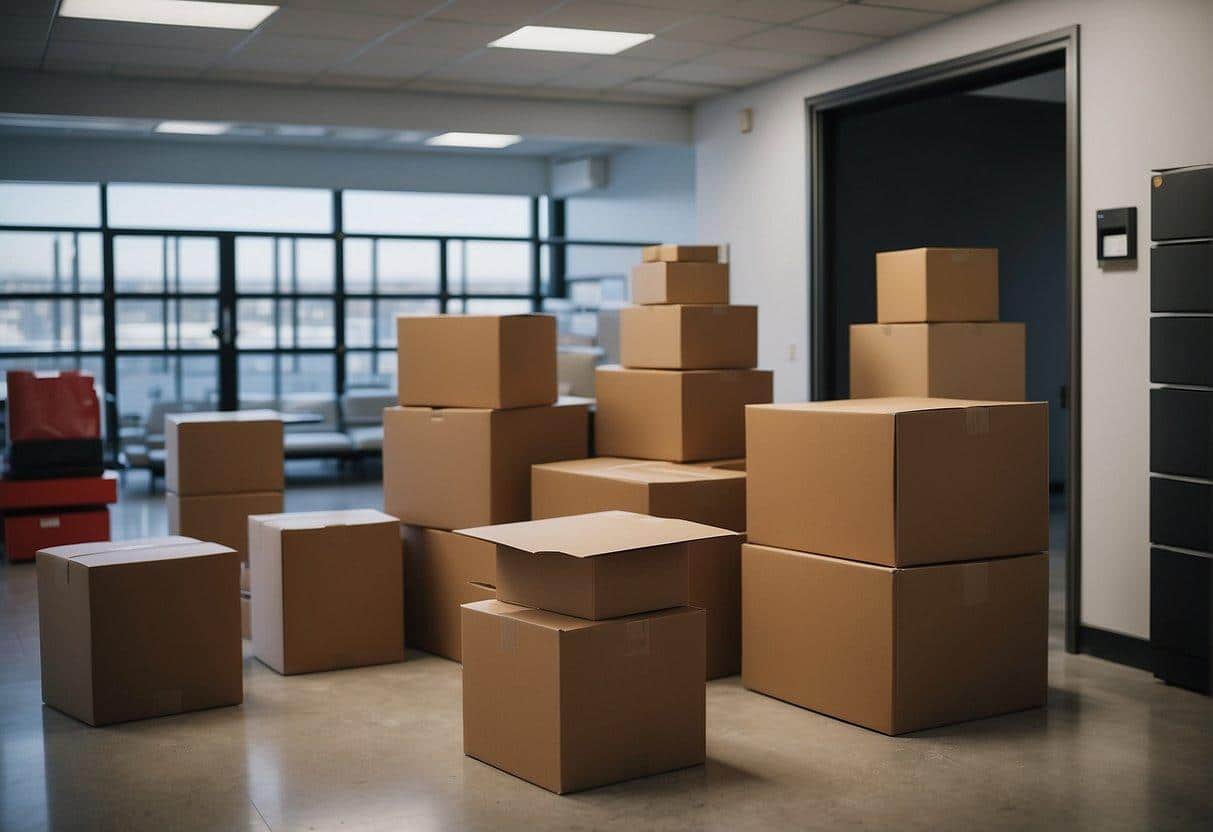Avoiding Common Local Moving Mistakes: Essential Tips for a Smooth Relocation
Moving locally can often be deceptively complex, leading individuals to underestimate the planning and organization required. One of the most common local moving mistakes is a lack of early preparations. People tend to delay sorting, packing, and organizing their possessions, which can result in a chaotic and stressful moving day.
Visit this site to hire professional movers for a clear plan well in advance, ideally as soon as the decision to move is made and set the stage for a smoother transition. Utilizing a detailed moving checklist can help to keep track of what needs to be done and when, ensuring that nothing important is overlooked as the moving date approaches.

Another frequent oversight is failing to anticipate the logistical requirements of a local move. Necessary actions, such as securing parking permits for the moving truck at both the current and new residences, often go forgotten. This can lead to costly fines or delays on moving day.
Furthermore, people sometimes make the mistake of packing non-allowable items, such as flammable or corrosive substances, which not only poses a safety risk but is also against the law. It’s crucial to be aware of such regulations and prepare accordingly.
To execute a local move effectively, it is important to recognize and avoid these pitfalls. Attention to detail, proper scheduling, and compliance with legal requirements form the foundation of a successful local relocation. By respecting the complexity of the task and preparing appropriately, one can transition to a new home with minimal issues.
Planning and Preparation
Effective planning and preparation are foundational to a smooth local moving process. By focusing on creating a detailed moving checklist, securing quotes from reputable movers, and systematically decluttering, one sets the stage for a stress-free relocation.
Creating a Comprehensive Moving Checklist
A carefully constructed moving checklist is a roadmap to an organized move. One should enumerate all tasks, categorizing them by timelines such as “2 months prior,” “1 month prior,” and “1 week prior,” ensuring no detail is overlooked. Items on the checklist can range from acquiring packing supplies to scheduling utility transfers.
Securing Quotes From Reputable Moving Companies
It’s crucial to obtain quotes from multiple moving companies. This allows for a comparison of services, insurance options, and costs. Requests for these quotes should be made well in advance to avoid last-minute bookings, which often come with premium prices.
Decluttering and Organizing Belongings
Decluttering is a vital step in moving preparation. One should sort through belongings, determining what to keep, donate, sell, or discard. This not only reduces moving load but also streamlines the unpacking process. Organizing items by category and room can facilitate a more efficient packing and unpacking experience.
Packing Strategies

Effective packing is fundamental to a successful move. It protects possessions, streamlines the unpacking process, and ensures crucial items are accessible. Let’s consider targeted techniques for packing.
Using Appropriate Packing Materials for Fragile Items
When packing fragile items, selecting the right materials is crucial for protection. Bubble wrap, packing paper, and sturdy boxes are non-negotiable for delicate belongings. Fragile items should be wrapped individually and given extra padding within boxes. Marking these boxes clearly as “Fragile” will alert movers to handle them with care.
Labeling Boxes for Efficient Unpacking
A systematic labeling system contributes significantly to unpacking efficiency. Each box should be labeled with its contents and the room it belongs to. Utilize a color-coding system for quick identification; for example:
- Kitchen: Blue
- Bedroom: Green
- Living Room: Red
This approach not only simplifies unpacking but also helps in prioritizing which boxes to open first.
Building an Essentials Box
An Essentials Box should contain items needed immediately upon arrival at the new location. Include toiletries, medications, basic tools, a change of clothes, and chargers. This box should be packed last and unloaded first. Clearly label it as “Essentials” to avoid it being misplaced amidst other boxes.
Moving Day Execution

Moving day can be fraught with potential issues if one does not execute their plans carefully. Addressing safety precautions, minimizing delays, and handling valuables require attention to detail to ensure a stress-free transition.
Ensuring Safety Precautions are Taken
Prioritizing safety during a move reduces the risk of injury and accidents. One should use appropriate lifting techniques, keep paths clear of obstacles, and ensure that any equipment used is in good working order. It’s advisable to wear protective clothing such as gloves and sturdy footwear to safeguard against accidental harm.
- Proper Lifting: Bend at the knees and keep the back straight when lifting.
- Clear Pathways: Remove tripping hazards from walkways and stairs.
Avoiding Delays and Last-Minute Problems
Efficient time management is crucial to prevent last-minute rushes which can cause stress and disorganization. One should double-check the readiness of all items the day before the move. Confirming the arrival time with the moving company and ensuring accessibility for the moving truck are imperative steps.
- Checklist: Tick off completed tasks as the moving day approaches.
- Prepare an Essentials Box: Gather items that are needed first at the new location.
Handling Fragile and Valuable Items with Care
Delicate items and valuables should be packed securely and labeled clearly to avoid damage during the move. Use appropriate packing materials and consider special crates for particularly fragile items.
- Packing Materials: Bubble wrap, packing paper, and sturdy boxes are essential.
- Labeling: Clearly mark boxes with breakables as “Fragile” and indicate which side is up.
Post-Move Considerations

After relocating, the focus shifts to establishing a comfortable and functioning household. Two critical tasks demand attention: setting up essential services and reflecting on the moving experience to provide feedback.
Setting Up Utilities in the New Home
Upon arrival at the new residence, setting up utilities takes precedence. One needs to ensure that electricity, water, gas, internet, and other necessary services are operational to transition into the home comfortably. Here is how to approach this:
- Contact utility companies prior to the move to schedule connection dates.
- Ensure all previous accounts are closed or transferred to avoid being billed for services at the old address.
Reviewing the Moving Process and Submitting Feedback
Reflecting on the moving process is invaluable for both the homeowner and the moving company. One should:
- Draft a review detailing the services received, which helps future clients understand the mover’s quality.
- Submit feedback directly to the moving company as they can use this information to improve their services.
Feedback can encompass punctuality, handling of belongings, and customer service. Accurate reviews also play a part in maintaining industry standards by holding movers accountable.







